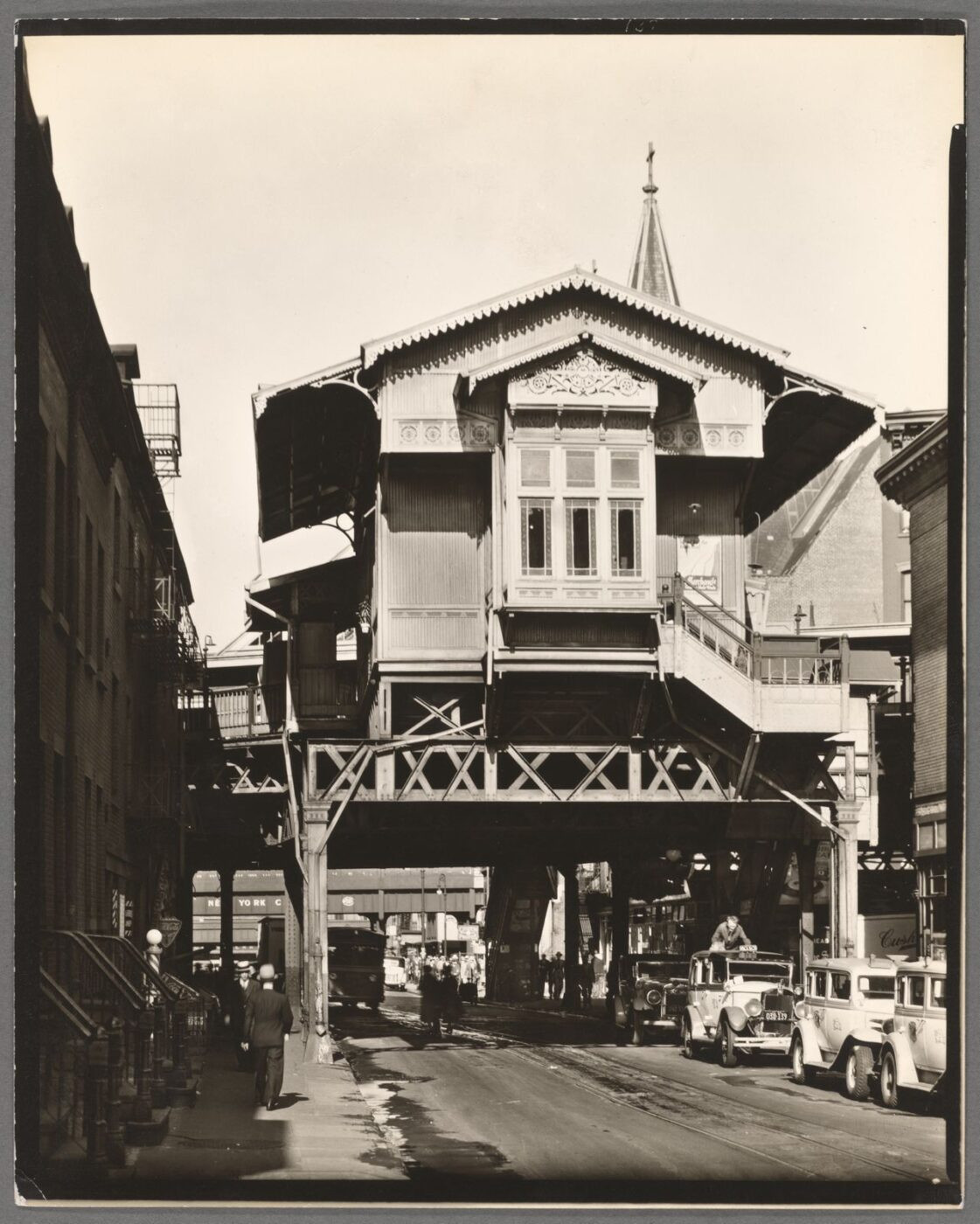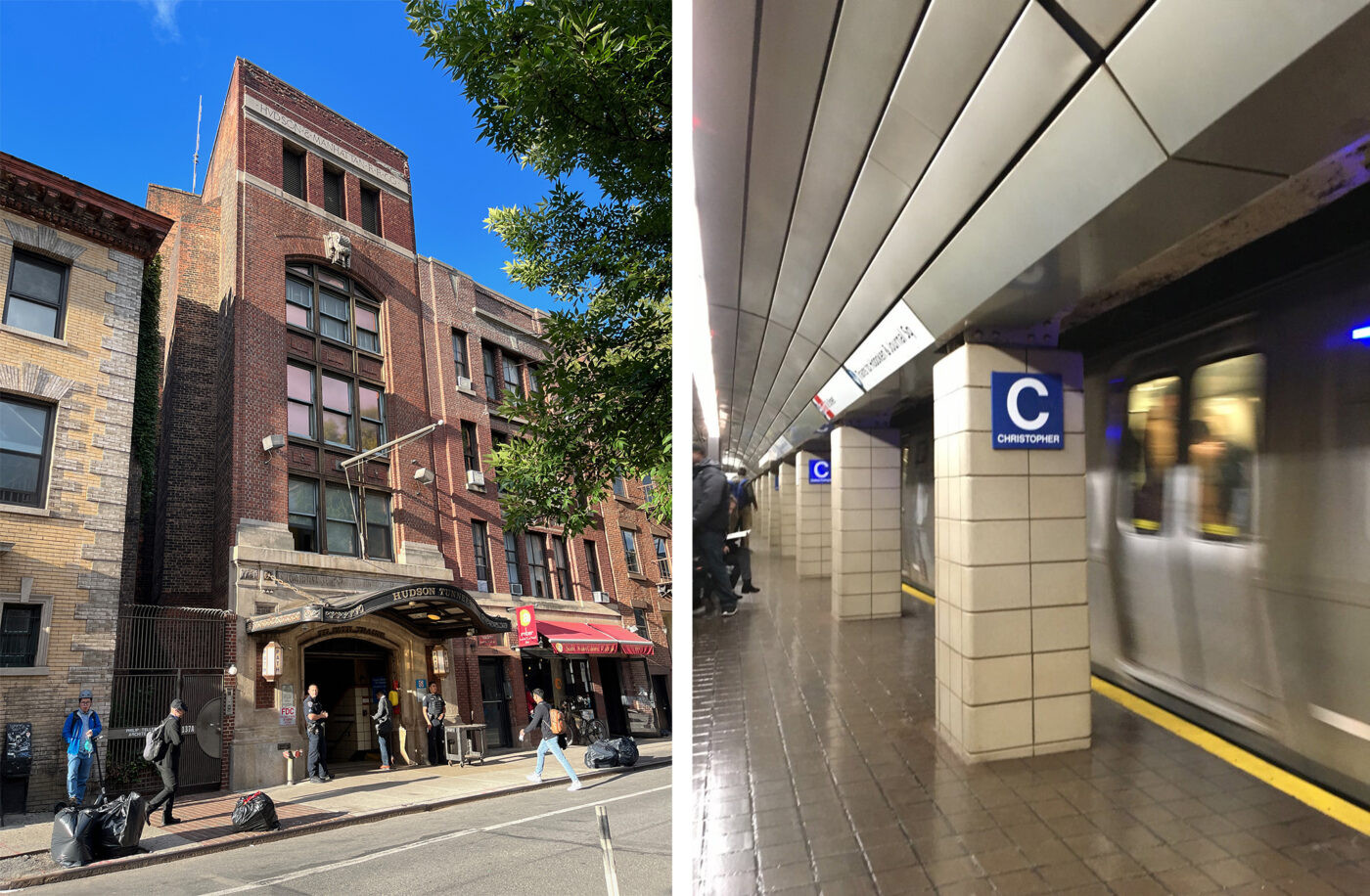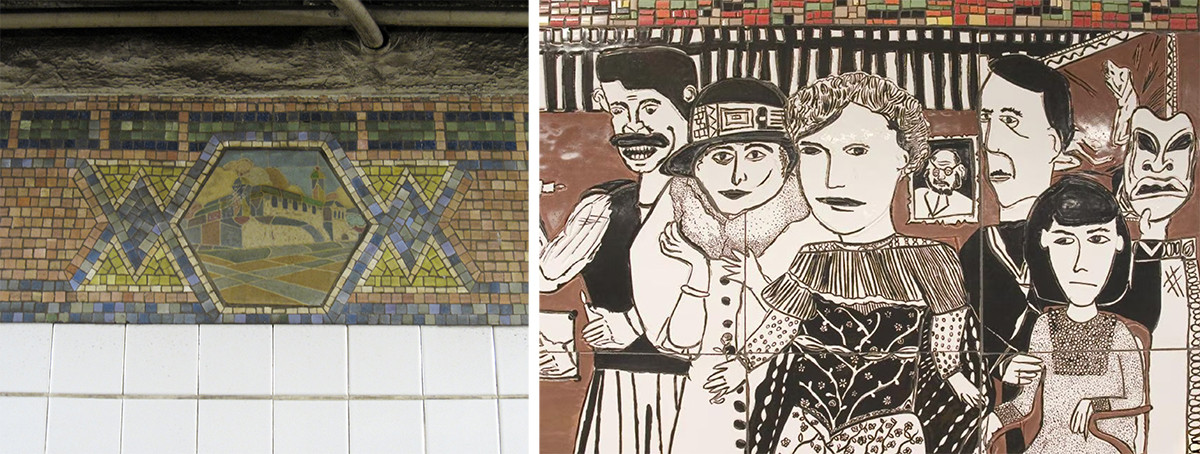Christopher Street in Manhattan, a name synonymous with the vibrant history of New York City’s West Village, boasts a rich tapestry woven from centuries of urban evolution. Originally known as Skinner Road in the 18th century, it was rechristened in 1799 by Charles Christopher Amos, a local landowner, to bear his name – a moniker that has endured through generations. Lined with architecture whispering tales of bygone eras and home to iconic landmarks like the Stonewall Inn and the tranquil Christopher Park, the street typically offers a serene escape amidst the city’s bustle. However, for a significant yet often overlooked period in the early 20th century (1918-1940), Christopher Street transformed into a bustling mini-transit hub, hosting an impressive convergence of three distinct rail transit stations within a mere three-block radius.
The Era of the Ninth Avenue Elevated Line
The earliest of these transit points, and the only one that no longer exists, was the Christopher Street station on the Ninth Avenue Elevated Line. This pioneering elevated railway marked the city’s first foray into elevated transit, initially launched as an experimental cable-powered line in lower Manhattan in 1868. Financial difficulties led to a default in 1871, but the line was acquired by the New York Elevated Railway Co. in 1872. This new ownership spurred rapid expansion, extending the line uptown through Manhattan and eventually reaching the Bronx by 1918.
 Berenice Abbott's 1936 photograph of the Christopher Street El station at Greenwich Street, showcasing the Swiss chalet-inspired architecture of the Ninth Avenue Elevated Line station.
Berenice Abbott's 1936 photograph of the Christopher Street El station at Greenwich Street, showcasing the Swiss chalet-inspired architecture of the Ninth Avenue Elevated Line station.
The Christopher Street express station, strategically located at Greenwich Street along the Ninth Avenue line’s Greenwich Village route, commenced operations on November 3, 1873. However, with the advancement of subway systems, particularly the Eighth Avenue subway opening in 1932, the elevated lines began to lose favor. By 1940, the Ninth Avenue Elevated Line was deemed obsolete. The Christopher Street station served the community until its closure on June 11, 1940, after which it was demolished along with most of Manhattan’s stations on this line, marking the end of an era for elevated transit on Christopher Street.
The architectural grandeur of the elevated station’s entryway, designed in the style of a Swiss chalet, captured the imaginations of artists. Berenice Abbott documented the station in her 1936 photography project for the Works Progress Administration’s Federal Arts Project, immortalizing its presence. Prior to Abbott, Beulah Buttersworth depicted the station in a 1934 painting titled Christopher Street, Greenwich Village, capturing a wintry scene beneath the elevated structure. This artwork gained prominence when President Franklin Delano Roosevelt selected it for display in the White House. It is now part of the Smithsonian American Art Museum’s collection, preserving a visual memory of the Ninth Avenue El station at Christopher Street.
 Beulah R. Bettersworth's 1934 painting "Christopher Street, Greenwich Village," portraying a winter scene with the Ninth Avenue Elevated Line station, now housed at the Smithsonian American Art Museum.
Beulah R. Bettersworth's 1934 painting "Christopher Street, Greenwich Village," portraying a winter scene with the Ninth Avenue Elevated Line station, now housed at the Smithsonian American Art Museum.
The PATH Connection at Christopher Street
Just a short distance from the former elevated station, approximately 100 feet away, lies the entrance to the Christopher Street station of the PATH (Port Authority Trans-Hudson) system, originally known as the “Hudson Tunnels” line. This network of tunnels beneath Manhattan and extending into New Jersey was the ambitious project of the Hudson and Manhattan Railroad Company, succeeding several earlier ventures to tunnel under the Hudson River, with initial efforts dating back to 1873. Construction culminated in 1905, and on February 25, 1908, President Theodore Roosevelt inaugurated the system, including the Christopher Street and three other original Manhattan stations, with a ceremonial button press from the White House. In 1962, the Port Authority of New York and New Jersey assumed control of the H&M Railroad, rebranding it as PATH, and continuing its vital service.
 Street-level and subway entrance view of Christopher Street PATH station, highlighting its integration into the urban landscape of Greenwich Village.
Street-level and subway entrance view of Christopher Street PATH station, highlighting its integration into the urban landscape of Greenwich Village.
Following the tragic events of 9/11 and the subsequent closure of the World Trade Center PATH station, the Christopher Street stop experienced a surge in ridership, becoming the busiest station within the PATH network. This influx led to significant overcrowding, extending to the next Manhattan station at Ninth Street and Sixth Avenue. To address these capacity issues, the Port Authority proposed new entrances for both Christopher Street and Ninth Street stations. However, these proposals faced strong opposition from Greenwich Village residents, local leaders, and community organizations like Village Preservation. The proposed locations, situated on narrow side streets characterized by delicate 19th-century architecture within historic districts, raised concerns about neighborhood impact. Ultimately, these expansion plans were abandoned. The opening of a temporary World Trade Center station in November 2003 alleviated the overcrowding at the Village stations, negating the immediate need for additional entrances.
The Arrival of the NYC Subway at Christopher Street-Sheridan Square
The final transit addition to Christopher Street came in the form of the Christopher Street-Sheridan Square subway station, located at Seventh Avenue. This station was part of the extensive 1913 “Dual Contracts,” a significant undertaking that facilitated subway line construction across Brooklyn and Manhattan. One crucial line, running from Times Square to lower Manhattan, necessitated the widening of Seventh Avenue, which inadvertently led to the creation of the unusual Hess Triangle near one of Christopher Street’s southbound entrances. The Christopher Street station opened alongside the rest of this line on July 1, 1918. Reflecting the aesthetic of early subway stations, ceramic tile shields adorn the station walls, depicting locally significant historical images. In this station, the tiles represent the Newgate State Prison, which once bordered Christopher, Perry, and Washington Streets and the Hudson River shoreline before its demolition in the mid-19th century.
 Historical image of Christopher Street-Sheridan Square subway station construction in 1914 alongside a contemporary view of the station entrance, illustrating the station's enduring presence.
Historical image of Christopher Street-Sheridan Square subway station construction in 1914 alongside a contemporary view of the station entrance, illustrating the station's enduring presence.
Another notable artistic feature within the Christopher Street station is “The Greenwich Village Murals,” created by Lee Brozgol and installed in 1994. Brozgol’s original concept for the ceramic panels was to celebrate local luminaries, but the overwhelming number of influential figures from Greenwich Village history led him to collaborate with students from P.S. 41. Together, they selected 40 individuals categorized as Founders, Providers, Bohemians, and Rebels, to honor the neighborhood’s rich history of artistic and political activism through these murals.
Christopher Street’s transformation into a transit hub in the early 20th century underscores its dynamic role in New York City’s urban narrative. From the pioneering elevated railway to the vital subway and PATH lines, this Greenwich Village street has served as a crucial artery in the city’s transportation network, reflecting its continuous evolution and enduring historical significance.
(To explore more about the transit history of our communities, visit our website.)

